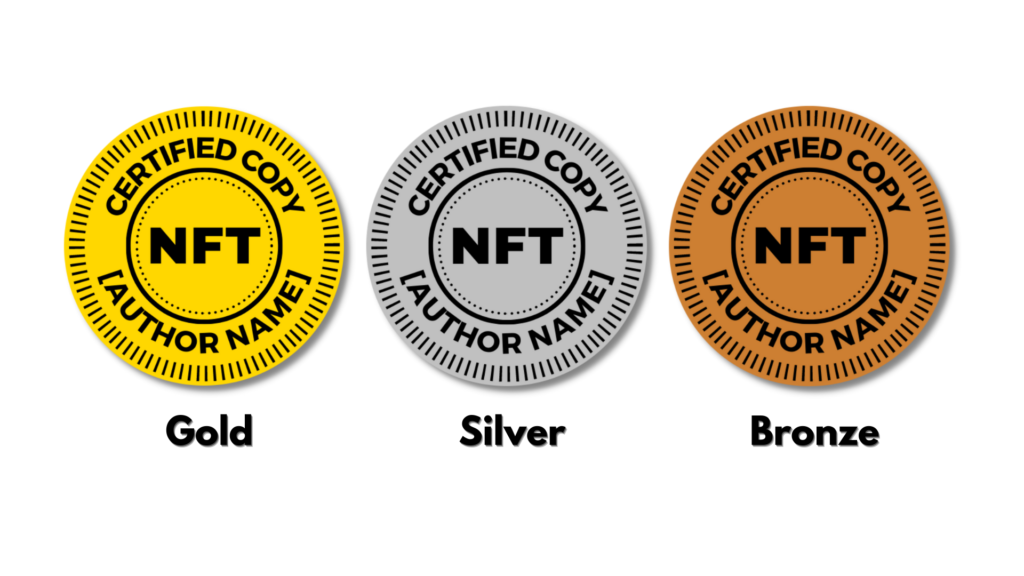
NFTs, or Non-fungible Tokens, can help authors create more revenue streams from their books. Here’s a detailed “NFTs for Authors” example that highlights how they can be used strategically, especially during book launches.
Let’s start with a quick explanation.
Quick update: I’m launching an “NFTs for Writers & Authors” free newsletter. If you’re interested in signing up, click here.
What are NFTs?
Non-fungible Tokens are pieces of data that uniquely represent digital items such as images or music files.
The word fungible means that you can easily exchange an asset with another. For example, if you have a $5 bill, and you trade it with someone for another $5 bill, then nothing changes. That makes your money fungible.
However, if you own the original copy of the Mona Lisa painting, and you trade it with a fake copy, then that trade would definitely change things (even if the fake copy is almost identical). That makes the Mona Lisa, and art in general, non-fungible.
Similarly, if you and a friend buy new copies of the same history textbook from a bookstore, then you can probably trade copies without noticing a difference.
But if the textbook author signed your copy, then that would make your copy non-fungible.
There are many articles that explain NFTs in detail, including this one. However, for this post, the main thing you should know is that you can apply that same “unique” feature (of a physically signed book) to a digital copy of your book by creating one or more NFTs for it.
And those NFTs would basically prove that you own unique digital copies of your book that you’re free to sell to anyone.
The Biggest Advantage of NFTs for Authors
The main differentiator that makes NFTs game changers is that you can make a percentage cut of the resale of the NFT in the secondary market (in perpetuity). That’s because NFTs are powered by “smart contracts” on the Ethereum blockchain.
For example, let’s say Jennifer buys the NFT directly from you for $100, and you set a 10% royalty in the smart contract. Two years later, you become quite famous and Jennifer sells it to Mike for $500. Then you get paid a 10% cut of that sale (i.e., you get paid a $50 royalty).
And if seven years after that, Mike sells it for $12,000, then you get 10% of that sale’s transaction as well (i.e., you get paid a $1,200 royalty).
How NFTs can be Used with Books
There are many potential applications of NFTs for authors. One idea is to use them during a book launch to increase marketing buzz and generate additional revenue.
This idea is inspired by one of Gary Vaynerchuk’s podcast episodes.
Here’s how it would work.
Let’s say I am self-publishing a new book soon (I’ll use one of my previous books, “Don’t Reply All,” to make this a more tangible example).
What I would do is create three tiers of NFTs for the book:
Gold, Silver, and Bronze.
I would also create a limited number of NFTs for each tier.
For example:
- 5 Gold NFTs
- 25 Silver NFTs
- 100 Bronze NFTs
Each tier would include a set of rewards that you give to readers who purchase an NFT.
For example, if someone purchases a bronze NFT of your book, they’ll get a copy of the ebook, plus a bonus or two.
And if someone purchases a silver NFT, they’ll get everything that the bronze NFT buyers would get, plus a couple of additional bonuses.
And if someone purchases a gold NFT, they’ll get everything that the silver NFT buyers would get, plus another cool bonus.
Those tiered rewards would be similar in structure to how crowdsourcing platforms such as Kickstarter, or tiered memberships such as Patreon work.
The bonuses and rewards can include any combination of digital goods (files or software), physical merch (t-shirts or stickers), or even access to your time (1:1 coaching, consulting, speaking). Authors can get as creative as they want with this.
NFTs for Authors: How Would You Buy and Sell Them?
Many NFT marketplaces, such as Rarible and OpenSea, facilitate the process of buying and selling NFTs. It’s not a super complicated process, but it’s not an easy one either.
Here’s a quick overview.
Buying NFTs
At a high level, here’s what you’ll need to buy an NFT:
- Own some cryptocurrency (ideally Ethereum) by buying it from a digital currency exchange (such as Coinbase)
- A crypto wallet (such as MetaMask or Coinbase Wallet) to transfer some of your cryptocurrency from your exchange account to your wallet
- An account on a marketplace (such as Rarible or OpenSea) to link your crypto wallet to that marketplace so you can buy NFTs
One thing to note is that during every step of the process (buying crypto, transferring it to your wallet, and buying NFTs), you’ll need to pay fees (called brokerage fees, transfer fees, and gas fees respectively), so they can easily add up.
As an author, you would need to think about guiding your potential buyers on how to buy NFTs so that they understand the whole process ahead of your launch.
Selling NFTs
To sell an NFT, you need to create one first using a process called “minting.”
To mint an NFT, you would need to have the same list of things you need for buying an NFT (a wallet connected to a marketplace) and fill in some information required by that marketplace.
Some marketplaces charge minting fees (called gas fees) to create a token, so it’s not always free. Others such as OpenSea, have recently announced that they stopped charging creators gas for minting tokens.
I highly recommend that you spend some time setting up your accounts and looking through those types of marketplaces before you buy or sell anything.
Some of this stuff can be overwhelming and you probably want to know what you’re doing first by immersing yourself in the NFT world for a couple of days.
Strategy for Structuring Your Book’s NFTs
I would create unique NFTs for each tier (e.g., 5 unique Gold NFTs, 25 unique Silver NFTs, etc… ) and give each one a separate, numbered name.
For example, the 5 Gold NFTs would be named
- “Don’t Reply All” Gold NFT (1 of 5)
- “Don’t Reply All” Gold NFT (2 of 5)
- “Don’t Reply All” Gold NFT (3 of 5)
- “Don’t Reply All” Gold NFT (4 of 5)
- “Don’t Reply All” Gold NFT (5 of 5)
The sliver ones would be named in a similar fashion, but have a numbered sequence out of 25. For example:
- “Don’t Reply All” Silver NFT (1 of 25)
- “Don’t Reply All” Silver NFT (2 of 25)
- ….
And so on.
Technically, the NFTs can be issued in different ways depending on the platform.
For example, with Rarible, you can create one “collectible” and have multiple NFT quantities for that collectible. Here’s a screenshot to help explain what I mean.
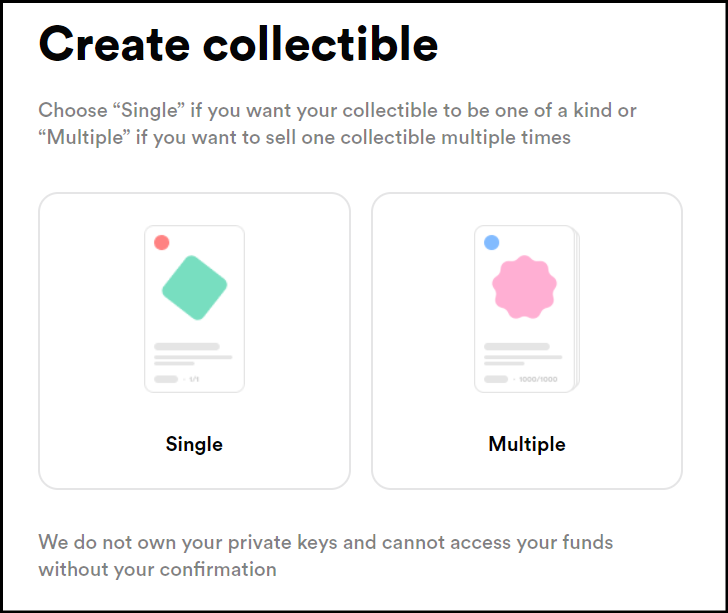
So if I wanted to issue 5 Gold NFTs for my book, I could choose the “Multiple” option and then enter “5” under the number of copies.
Alternatively, I could choose the “Single” option and then run the process five separate times.
The “Multiple” option is easier (and I believe cheaper), but the “Single” option would have an advantage because you could include the sequence number of each book (1 of 5, etc.) in the name of the token. That gives each customer a unique number and reinforces scarcity.
Regardless of how you structure it, the idea is you’ll have unique NFTs that each reader can fully own.
You’ll then list those NFTs for sale on that marketplace and offer them to your readers at different price points during a book launch.
For example:
- Gold NFTs: $1,300 each
- Silver NFTs: $750 each
- Bronze NFTs: $250 each
That’s pretty much the entire strategy in a nutshell.
However, there is one challenge that you’ll need to consider before selling NFTs.
The NFT Flex Problem
One challenge about NFTs that Gary discusses in his podcast is what he calls the flex problem.
The idea is that people who buy unique things want a way to flex or show off their purchase publicly. For example, if someone buys a limited edition sports card, they enjoy taking a picture of it and posting it on social media to boast about it to their friends.
Even billionaire art collectors love taking their guests on a tour of their collections to show them off.
But the problem with NFTs is that they’re not tangible. Anyone can buy the same ebook, and tokens are digital, so how would someone who buys an NFT be able to brag about it?
Although public marketplaces can showcase the collections people own, they’re probably not enough as a primary incentive.
So here’s a potential solution for books.
A Solution to the NFT Flex Problem
One idea is to create special physical copies of your book that go along with the NFT copies.
The physical copies would be independent of the NFTs themselves, but they can be coupled with the initial NFT sale to help solve the flex problem.
Here’s how it would work.
For each person who buys an NFT, they would also get a signed physical copy of the book with a certified gold, silver, or bronze badge on the cover.
The badge would include an “NFT Certified Copy” label and even the author’s name.
Something similar to this.
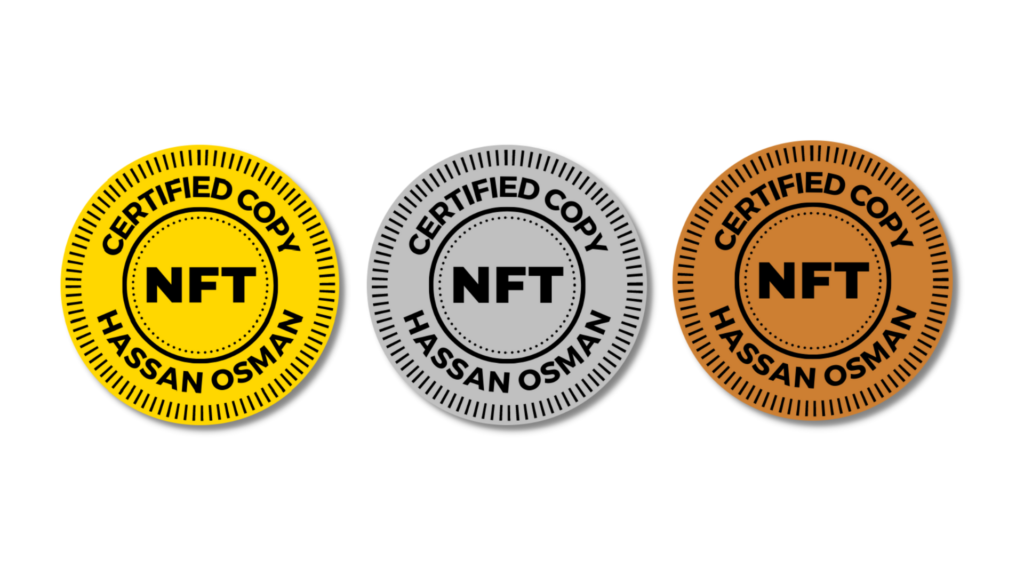
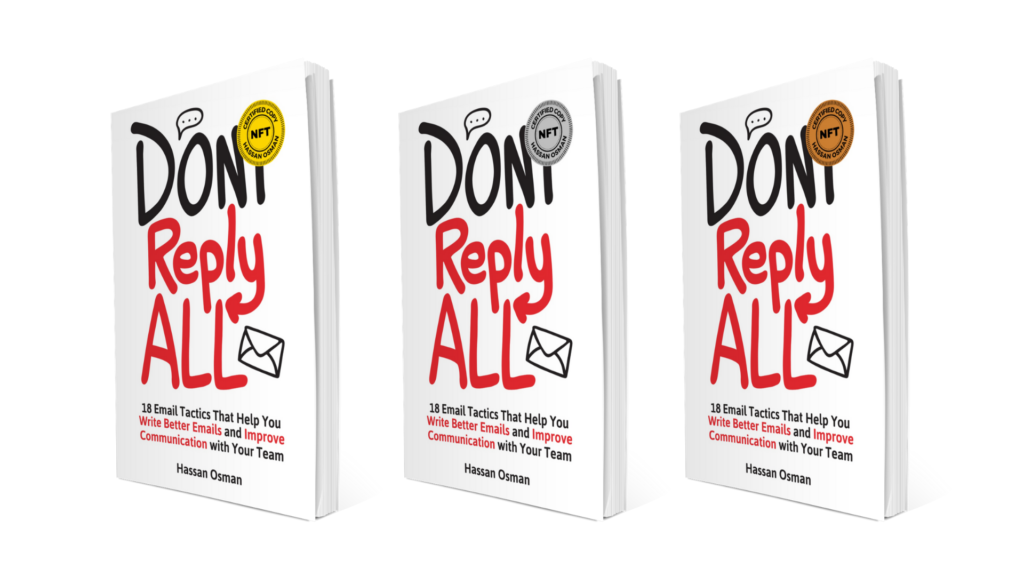
For under $40, you can even create a customized embosser, and use glossy gold, silver, and bronze stickers to emboss your NFT certified logo (similar to what you see on notarized documents or birth certificates).
This would give the badge a more professional look and make it much harder for people to copy it.
You would then sign the first page of your book, and write out the NFT Tier and number in the sequence (e.g., “Gold NFT (3 of 5)”).
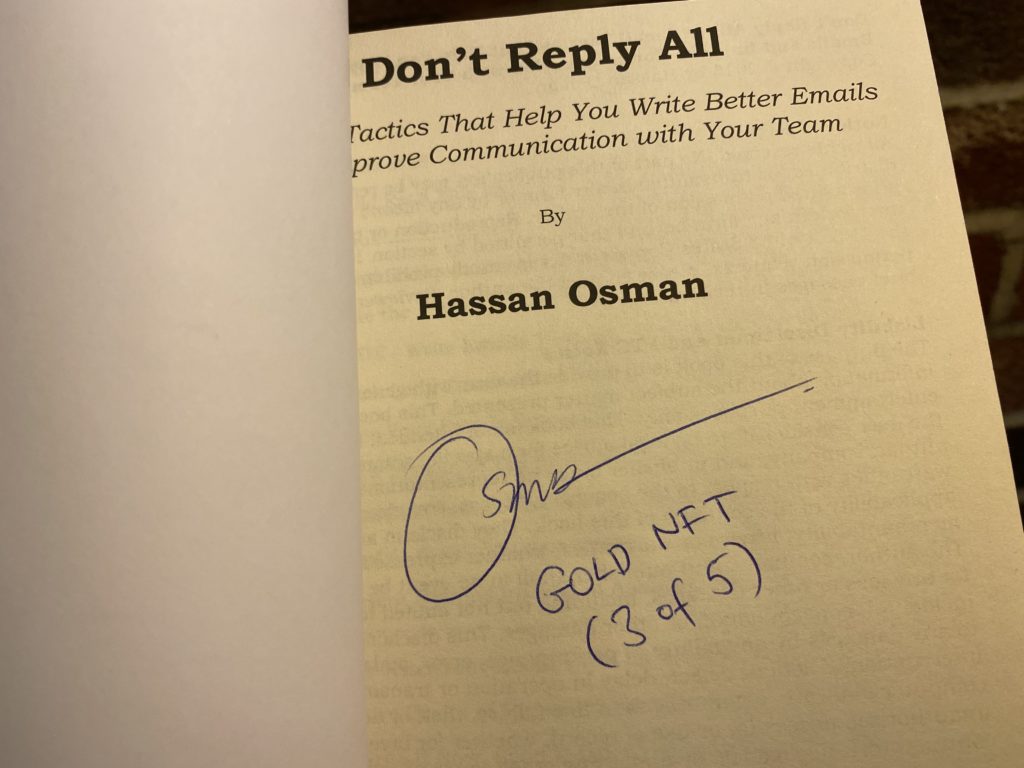
Of course, all this will take more time and effort on your end, but think about the free marketing this would create.
People would be able to show off their purchase by posting pictures of your physical book on social media.
Most importantly, your NFT buyers would have an additional asset that they could trade with others if they choose to. For example, they could ask for a higher price point if they sell both the NFT and the physical book copy as a bundle.
NFTs for Authors: Putting it All Together
Here’s an example of how a launch page would look like, and a sample of the different rewards for each tier that your buyers would get.
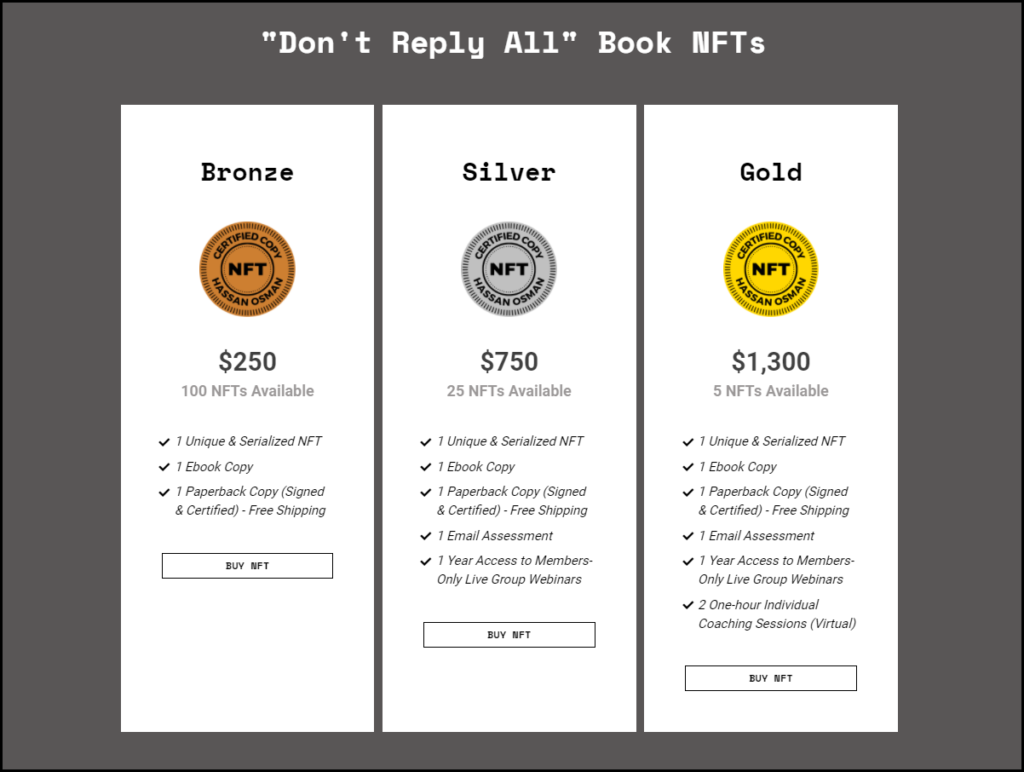
There are endless possibilities here.
For example, you can create another tier called “Platinum” or “Original Author Copy,” and issue only 1 NFT for it.
You can sell it for some crazy amount ($10,000+) and offer buyers an all-expenses-paid day to spend with you and ask you anything.
Or you can retain that NFT as an author and can potentially pass it along to your kids who can sell it at a much higher rate in the future.
How would you sell the NFTs?
You can make it as easy as having a big launch day and start accepting payments by opening the gates at a specific time using PayPal (to collect all information from your customers, including their physical addresses).
You can then coordinate with your buyers on transferring the NFTs to their account (using the marketplace of their choice) as well as sending them the physical copies of your book.
Book NFTs: Benefits to Authors
Here are a few “NFTs for Authors” advantages and benefits:
- Increased Revenue (short-term): Authors will get a totally new revenue stream from a channel that didn’t exist before. In the example above, an author who sells all those NFTs during launch day would make an additional $50,250 in revenue.
- Increased Revenue (long-term): Depending on the smart contract royalty percentage set when the NFT is minted (e.g., 10%, 20%, 30%, etc.), authors would get additional long-term revenues. In perpetuity.
- Increased Buzz: The immediate marketing effect of a launch using NFTs increases buzz because of an amplification effect. Readers discussing NFTs of your book on social media would increase exposure to reach readers who might not be interested in the NFT but would be interested in buying just the book.
- More fans: Think about someone who would buy a book NFT. They’re most probably fans who are betting on the future success of an author. In other words, they believe that the value of the NFT would increase, and those are the types of raving fans who would be proud to show off the author’s work and talk about it in different communities.
Book NFTs: Benefits to NFT Holders
Here are a few benefits and advantages for people who buy the NFTs:
- Equity & Growth in Value: NFTs are an asset. They are an investment that can grow in value over time, and NFT holders can sell it at a future date for a profit.
- Guarantee of Uniqueness & Scarcity: The fact that NFTs are numbered, and part of a limited series makes them unique and scarce. NFTs are easy to verify on the blockchain for quick authentication.
- A Sense of Connection to the Author: Owning an NFT can help give NFT holders a special feeling of being connected to the author. There’s a positive psychological element of “owning” something unique that not everyone has access to.
NFTs for Authors: Final Thoughts
NFTs are going to change several landscapes for creators (they already are, and you probably heard of the $69M Beeple sale). I think they’re going to be quite common in book launches in the next few years.
One important factor that’s needed to make book NFTs successful is for authors to have some sort of audience or community that they’re a part of.
It would be quite tough for a first-time author, who doesn’t have any following whatsoever, to be able to sell NFTs of their book.
I also think that in the near future, companies and self-publishers, such as Amazon could probably enter this space and completely disrupt it. They can simply add NFTs as upsell features on books and automate the whole process for authors.
We’ll see what happens.
In the meantime, I’m going to continue to closely follow this space and learn from it.
Update: I’m launching an “NFTs for Writers & Authors” free newsletter where I’ll share more information about this space. If you’re interested in signing up, click here.